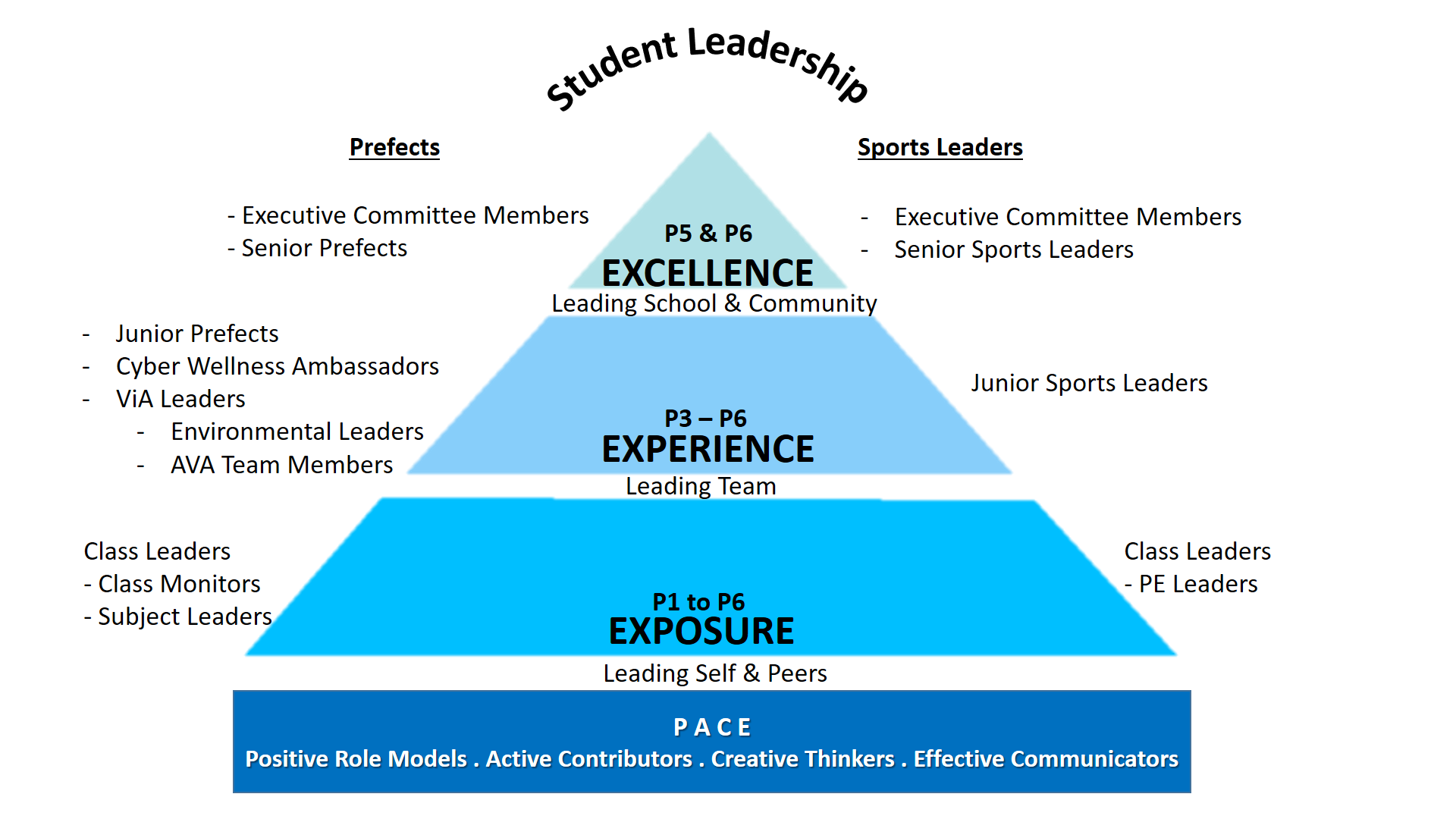LLP
LLP
Learning for Life Programme (LLP): Student Leadership in Community Service and Sports
Aims
Our Student Leadership Programme aims to imbue our Student Leaders with four attributes – PACE – through community service and sports:
- Positive Role Models who not only exemplify the school values (Kindness, Integrity, Resilience, Responsibility and Creativity) in their everyday actions but also possess the moral courage to advocate these values when faced with dilemmas;
- Active Contributors who are able to lead, motivate and encourage their schoolmates to serve the school and the community, and to live a healthy lifestyle through learning, loving and leading sports;
- Creative Thinkers who face challenges positively and possess a creative problem-solving mindset and skills which they can apply to serve the school and the community;
- Effective Communicators who are able to speak clearly and fluently to their audience as well as using evidence to explain their reasoning and decisions, in order to convince and influence others to serve the school and the community.
MICEE Model
The development of our Student Leaders is based on The Leadership Challenge®- MICEE model by Jim Kouzes and Barry Posner. The MICEE model comprises The Five Practices of Exemplary Leadership, which are:
- Model the Way
Our Student Leaders must lead by example, be role models and people whom everyone looks up to and wants to be like. Our Student Leaders will exemplify our school values through their actions and as a result, influence others to behave and respond in ways befitting of a Responsible Citizen.
- Inspire a Shared Vision
Our Student Leaders must be able to inspire and rally others to work towards a common vision and goal. In order to achieve that, our Student Leaders must be equipped with good communication skills which enable them to convince, persuade and get others to accept and embrace their ideas.
- Challenge the Process
A leader sees a problem as an opportunity rather than as an insurmountable hurdle. “Challenge the process” in the school context would mean coming up with innovative ideas and solutions to improve the school and the community. Our Student Leaders can tap on what they have learnt from our Creative and Inventive Thinking (CIT) programme and apply the skills in solving community issues.
- Enable Others to Act
Leaders do not work alone. Our Student Leaders need to bring people together and foster collaboration through building trust and relationships as people are more likely to share knowledge in an environment of trust and goodwill. Our Student Leaders must also understand that they have to communicate effectively in order to make the objectives clear to their audience and to create a shared awareness of the dimensions of the task.
- Encourage the Heart
Be it a simple cheer when the team is facing a challenge or a “hi-5” gesture when the team has completed a difficult task, these are simple forms of encouraging the heart which connect people and build positive relationships. Our Student Leaders need to recognise and be appreciative of the contributions made by his team members through encouragement and moral support.
3-Level Approach in Leadership Development

- Exposure: Leading Self and Peers (Level 1)
All students will be exposed to a Basic Leadership Development programme which comprises CCE lessons, character & leadership camps, VIA, PE and Sports Modules, Environmental Education, Creative and Inventive Thinking (CIT) Programme in problem-solving. The focus is on developing a greater sense of self-awareness, self-confidence and self-efficacy.
- Experience: Leading Others (Level 2)
The focus at this level is on developing greater social awareness and interpersonal skills Students who are identified with leadership potential at Primary 3 and above will be given more opportunities to practise and experience leadership roles at the school level. These students will be given platforms and programmes for them to improve and sharpen their leadership potential.
- Excellence: Leading the Leaders (Level 3)
Students who are identified with greater leadership potential at Primary 5 and 6 are assigned with larger leadership roles such as the Executive Committee Members of the Prefects and the Senior Sports Leaders. This group of students will be further developed, especially in the area of engaging and influencing their peers, so that they are equipped with the skill-set to lead their fellow schoolmates to serve the school community and the community at large.

